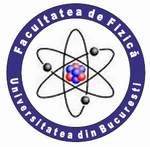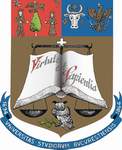| |
 |
UNIVERSITY OF BUCHAREST
FACULTY OF PHYSICS Guest
2025-10-05 22:25 |
 |
|
|
|
Conference: Bucharest University Faculty of Physics 2025 Meeting
Section: Biophysics; Medical Physics
Title:
Reconstruction parameters: A key component in 99mTc quantitative imaging
Authors:
Elena Monica FRĂȚILOIU (1,2), Camelia-Anamaria NEDELCU (1,2), Mario MUTULEANU (3), Cristina PETROIU(1), Mirela GHERGHE (1,3)
Affiliation:
1) Nuclear Medicine Laboratory, „Professor Doctor Alexandru Trestioreanu” Oncology Institute, Bucharest, Romania
2) Faculty of Physics, University of Bucharest, Bucharest, Romania
3) Department of Nuclear Medicine, „Carol Davila” University of Medicine and Pharmacy, Bucharest, Romania
E-mail
monica.fratiloiu00@yahoo.com
Keywords:
SPECT/CT; quantitative analysis; quality control
Abstract:
Aim/Introduction: Quantification is one of the major benefits of molecular imaging. The aim of this study was to evaluate the influence of reconstruction parameters on SPECT/CT image quality. The study focused on identifying the optimal association of the number of iterations, subsets and scatter correction factor (SCF) to obtain the best images for quantitative analysis. Performing acquisitions using SPECT/CT systems that meet the requirements of periodic quality control tests and properly calibrated is essential for obtaining accurate quantitative results.
Material and Methods: This study used SPECT/CT acquisitions of a NEMA IEC body phantom on a Discovery 670 DR SPECT/CT systems (GE Healthcare), equipped with low energy-high resolution collimators, to evaluate the quality of the obtained images. Six spherical inserts (10, 13, 17, 22, 28, and 37 mm in diameter) were filled with Tc99m-pertechnetate, with an activity concentration 4 times higher than the concentration of the phantom background. The following tests were performed: accuracy of activity recovery (HSRC), image noise evaluation (N) and the signal to noise ratio (SNR). For these tests, we used a NEMA protocol, with 120 projections per 360 degrees (60 degrees per detector) at steps of 30 (10 s/projection). We used the following combinations of iterations and subsets: 2 iterations/10 subsets(2i/10s), 4 iterations/10 subsets(4i/10s), 5 iterations/15 subsets(5i/15s), and 24 iterations/10 subsets(24i/10s).
Quantitative SPECT reconstructions for the obtained test images were done with the dedicated software module, using the Ordered Subset Expectation Maximization (OSEM) algorithm.
Results: Reconstruction with SCF = 0.41 showed better activity recovery and less noise influence, especially for smaller spheres, compared to SCF = 1.1, which underestimated activity and introduced more noise into the images. It was also observed that a higher number of iterations (24i/10s) improves activity recovery but amplify the noise, while 5i/15s provides a good balance between recovery and noise. The sphere size plays an important role, with larger spheres having a better SNR.
Conclusions/Discussions: To achieve better quantitative accuracy, the reconstruction process incorporates corrections for attenuation, scatter, and collimator blur. For enhanced quantitative results, it is recommended to increase the number of iterations while avoiding post-filtering process. While the resulting image is not more accurate quantitatively, it tends to be noisier and less suitable for visual inspection.
|
|
|
|